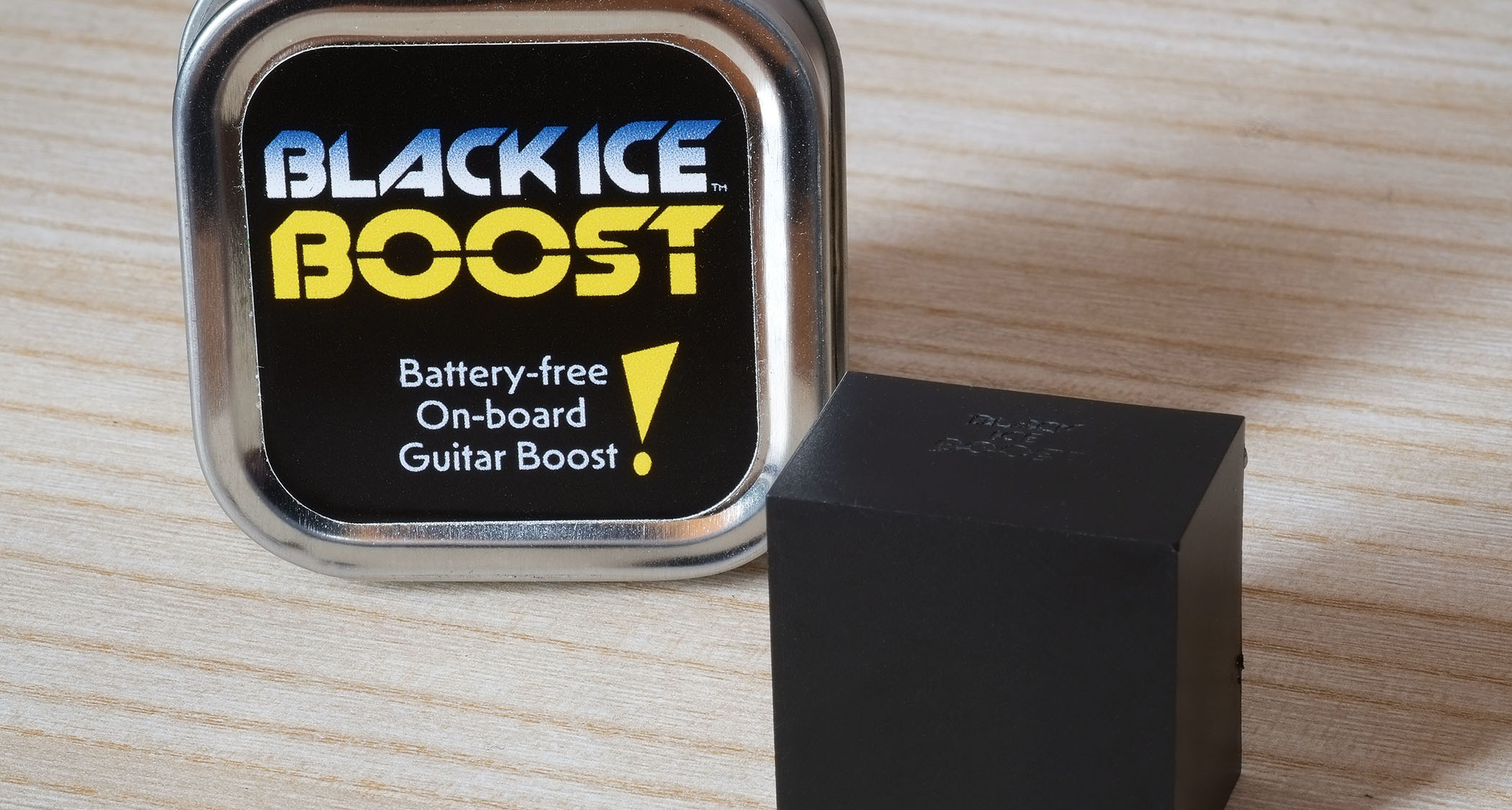
I was always taught that when it comes to boosting anything onboard a guitar you need an active circuit, and that needs power: a battery. And what is the thing that us electric guitarists really don’t like? A battery!
It’s a little odd in that any of us who use our acoustics live invariably have a battery onboard to power our preamps; it’s the same thing with plenty of bass guitars, too. But switch back to the electric guitar and for many players it’s a total no-go.
This ‘acoustic good/electric bad’ situation is reflected by the instruments we’re offered: very few production guitar makers employ active circuits, Music Man being a notable exception. Active pickups, which again need a battery, are another polarising choice. Some swear by their EMG or Fishman Fluence setups… Others run a mile.
John Mayer recently gave the topic a valid shout-out with his ‘Dead Spec’ PRS Silver Sky, which features an active Alembic Blaster preamp and a proper flip-top battery compartment as you might find on an electro-acoustic.
To be fair, many players don’t like batteries simply because to change them you have to virtually disassemble your guitar, not least if it’s a Stratocaster style. With the ‘Dead Spec’, you don’t have to do that. Simple. But even John Mayer – as popular as he is – isn’t going to change the taste of the world’s anti-battery brigade.
Passive power

2022’s Revstar Mk II refresh, however, saw Yamaha – in its typically highly considered fashion – introduce a passive boost, which it called the Focus switch. This doesn’t use a battery, but it does use a small step-up transformer in the control cavity.
In use, it supplies a subtle but noticeable boost, although it’s not full frequency: it’s centred on the midrange and low-end. It’s not a variable boost, either, and having spent quite a bit of time with one, I initially concluded it’s of limited use; indeed, you can easily create a similar boost with an outboard EQ pedal.
But the concept – as another thicker voice and without using a battery or taking up more pedalboard space – isn’t daft and is actually quite useful in order to broaden your sound options.
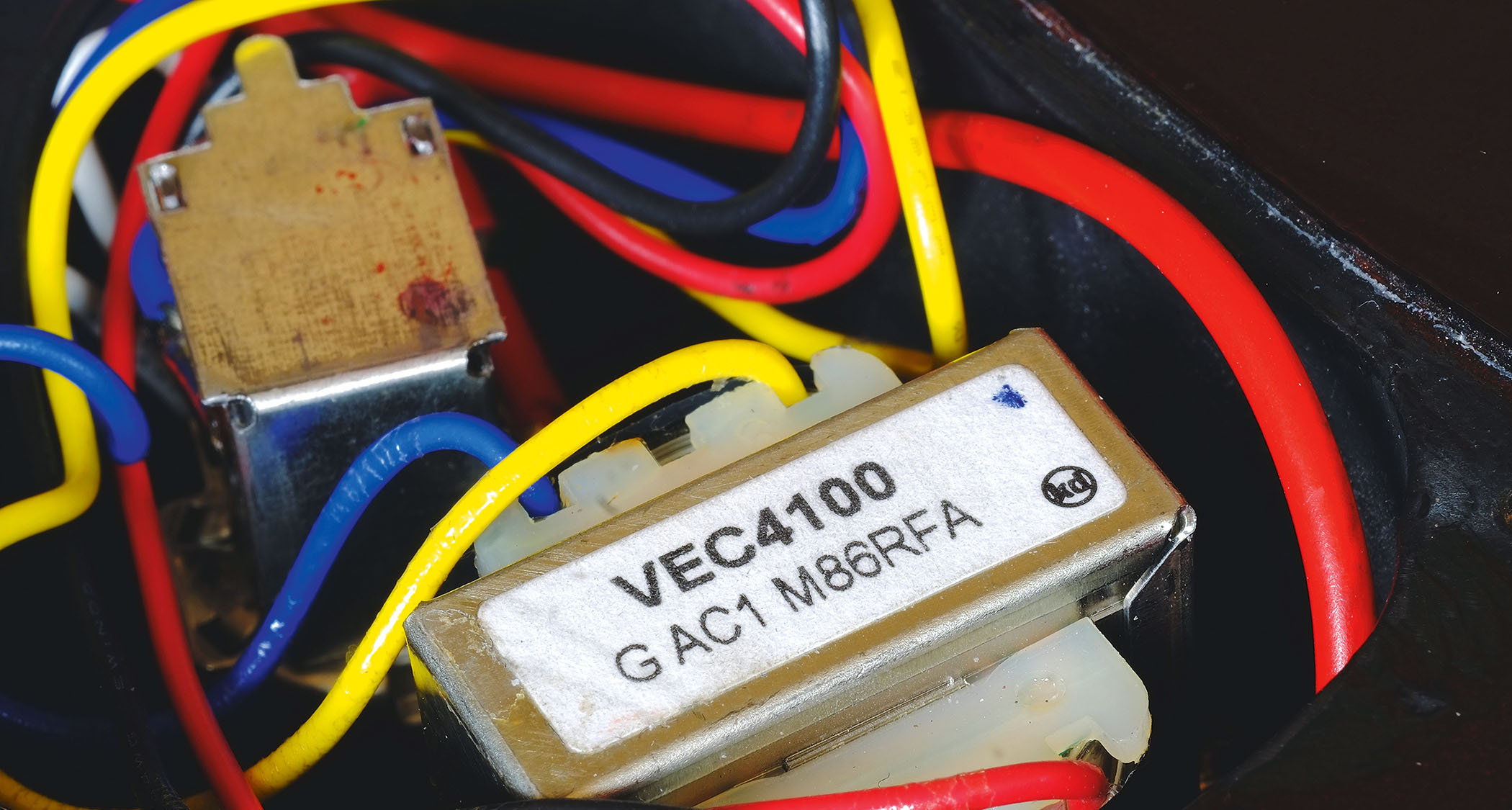
But then, rather like London buses, another passive boost came along. This was courtesy of Mike Christian, who I’d had some contact with some years back when he was making ‘acoustic’ pickups for electric guitars, now known as Graph Tech’s Ghost pickups.
“I now have something new to offer folk who enjoy coaxing new sounds out of their favourite electric guitar or bass,” said Mike in his welcome email. “I’d say the big news is our new Black Ice Boost module [see below] – it offers fingertip access to 7dB of true boost, without the need for a battery or any other power source.” Intriguing, I thought, although a few bells were ringing…
“Yes, you may have seen a device called Black Ice Overdrive before, perhaps in an old StewMac catalogue or online,” confirmed Mike. “Now that I’ve closed my repair shop, I decided to develop a new companion product – the Black Ice Boost – which I believe is a more useful and appealing device.
“The ‘Distort’ name seemed more appropriate, so we renamed the Black Ice Overdrive the ‘Black Ice Distort’ when we introduced the Black Ice Boost. The two versions are otherwise identical.”
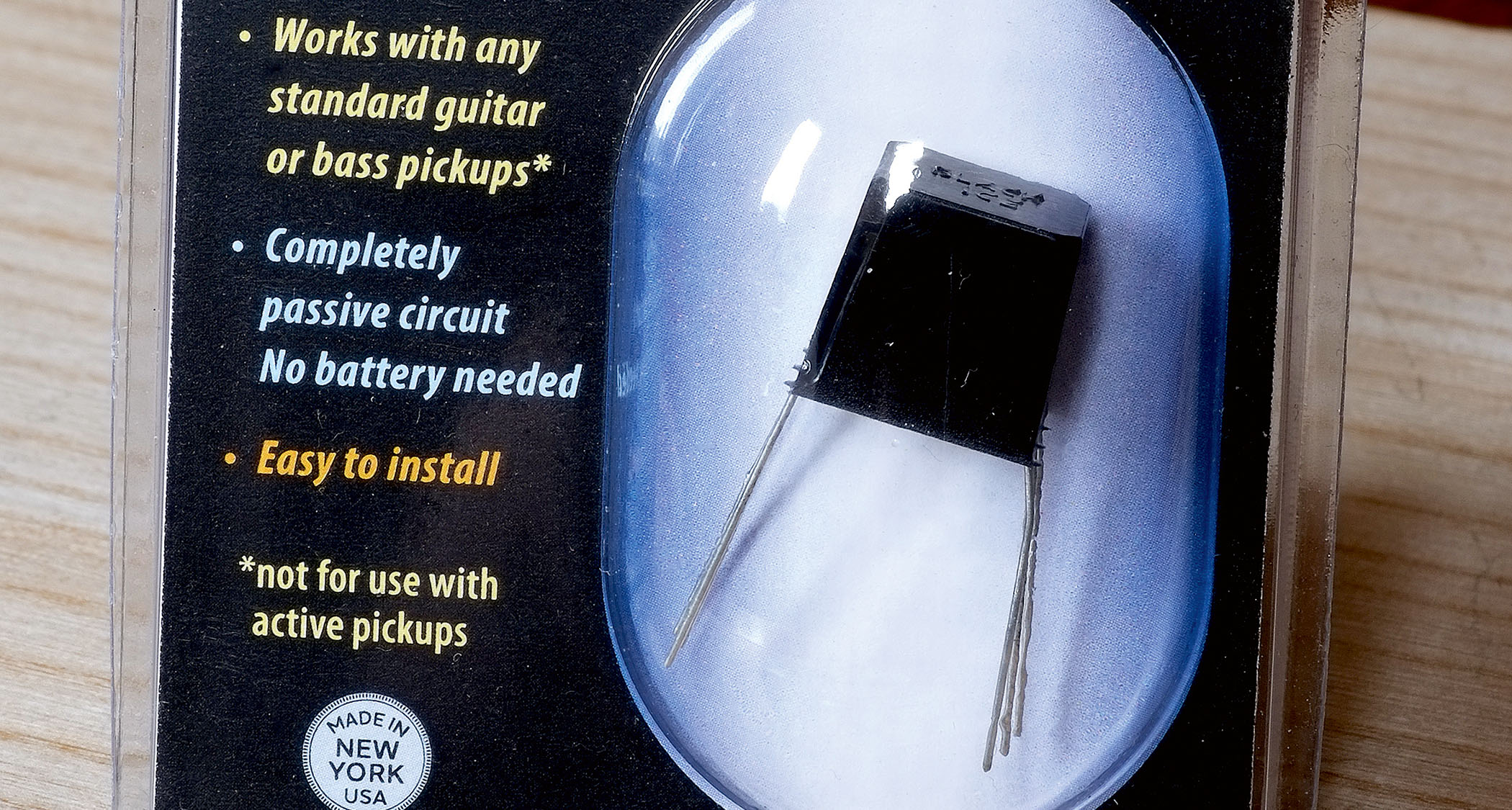
Grateful that my memory isn’t completely shot (although I can’t remember actually trying that Black Ice Overdrive back in the day), could Mike’s endeavours mean that us battery-phobic guitarists can access a truly passive boost? Even though Mike shipped us a couple of samples to try out, he is less keen on spilling the beans.
“I think you may find that I’m annoyingly reluctant to get too specific about what’s under the hood,” he says. “Folk will point out that with passive devices you can’t gain something without sacrificing something else. And they’re absolutely correct. But if you manipulate these trade-offs very carefully, they can be used to your advantage when trying to reshape the frequency response and output of a pickup.
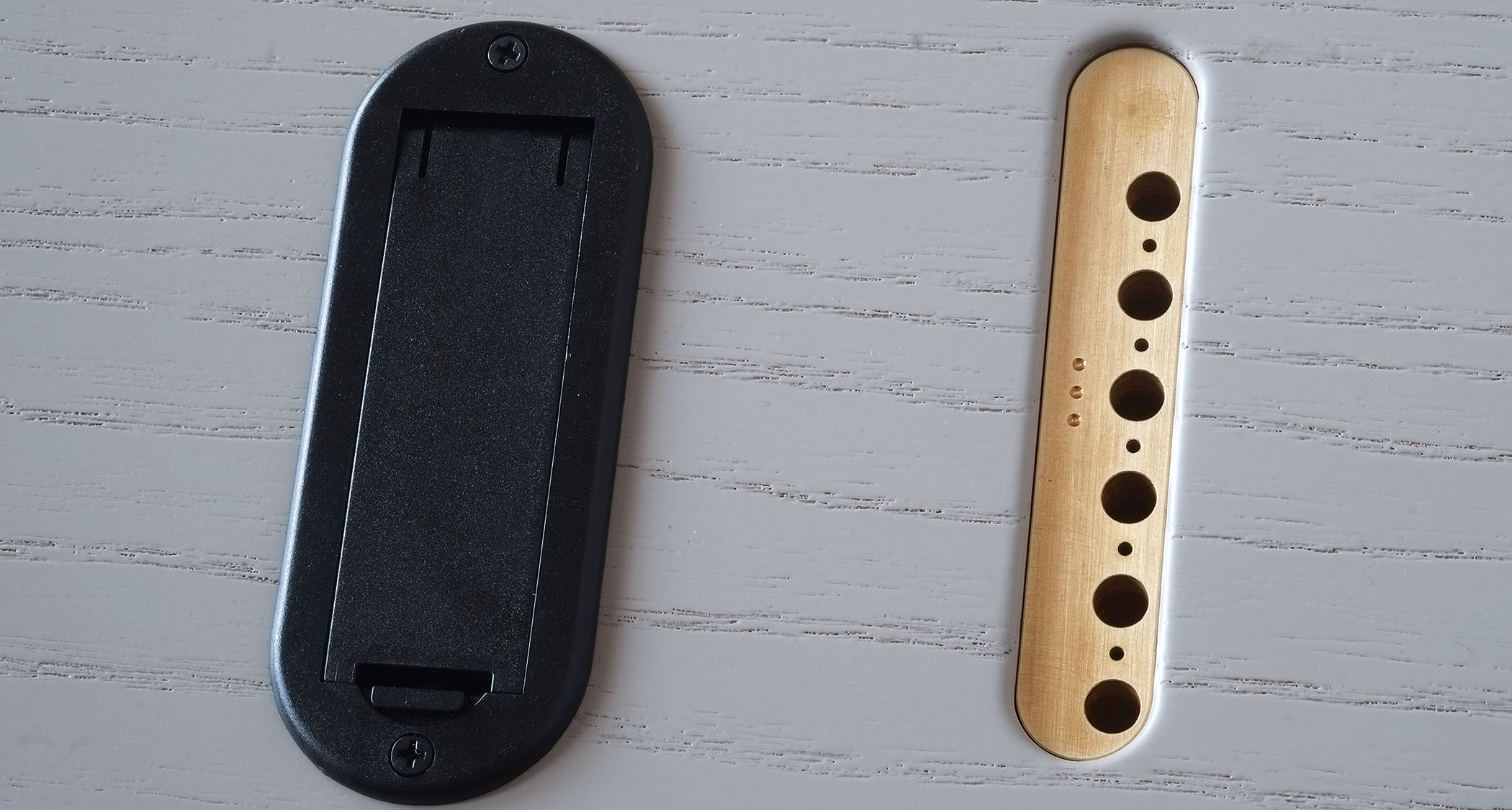
“In our case, we managed to sacrifice a small amount of high-frequency energy in exchange for significantly more output in the mids and more output overall,” he continues. “With single-coil pickups, the end result can sound strikingly similar to the mid-forward, slightly darker sound produced by humbuckers.
Our boost is voiced primarily for single-coil pickups and it has significantly more boost on tap: enough for highlighting a solo or driving an amp into clipping, for example
Mike Christian
“I will also say that while the design and functionality of our Black Ice Boost is significantly different, it does share some common electrical traits with the traditional-style transformer found in Yamaha’s Revstar models. But, again, our boost is voiced primarily for single-coil pickups and it has significantly more boost on tap: enough for highlighting a solo or driving an amp into clipping, for example.
“Finally, I should mention that the Yamaha transformer is definitely not typical,” says Mike. “Up until now, it was the only currently available device that is compatible with high-impedance passive guitar-pickups (and it’s not available separately). That’s why we’re building the Black Ice Boost from the ground up here in New York. I wish we could buy something off the shelf!”
Get to work
I’m going to concentrate on the Black Ice Boost here. And to fully hear what’s on offer, I need to fit two mini-toggle switches (or pull-push pots) to a single-coil-equipped guitar.
The Black Ice Boost measures 30mm by 30mm by 21mm, a smaller but wider footprint than a nine-volt block battery (which, of course, we don’t need). There’s nothing to see as it’s encapsulated in what looks like epoxy resin with just four visible small loop connection points.
Not wanting to drill holes for a couple of mini-toggle switches, I’m going for two pull-switch pots and conclude a Telecaster would be a good host. However, while Mike confirms it’s doable, it is a very tight fit, especially with those pull switches. So I switch to a loaner PRS SE Silver Sky and get to work.
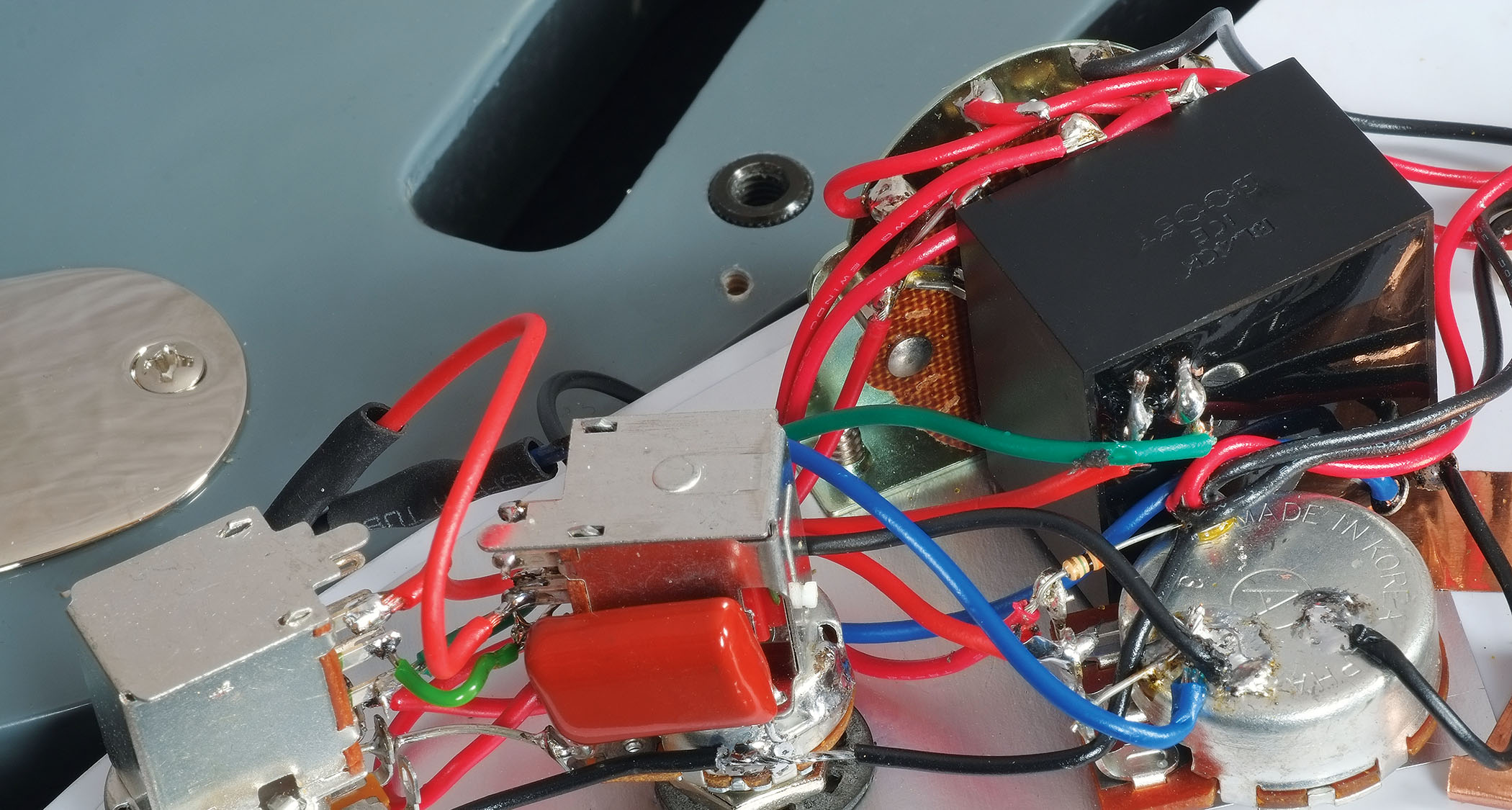
The Black Ice Boost fits perfectly between the volume and five-way switch and is held in place with a supplied sticky foam pad.
Obviously, I need to mod the Sky’s wiring, replacing the two tone controls with pull-switches: the centre-placed middle and neck-pickup tone for the Boost’s on/off switch, and the bridge tone to set full gain (7dB) in the up position, and partial boost (4dB) when the knob is pushed down – you can easily swap those around if you prefer.
The instruction sheet is clear and if you have basic soldering skills it’s a pretty simple job [pic 5]. That said, there’s a small logo on the cube that needs to be facing down when you wire it from the diagram. Initially, I wire the Boost upside down so only the partial boost works. Mike puts me right!
But does it work?
If you think ‘passive’ and ‘boost’ don’t belong in the same sentence, think again. With the partial boost engaged, it’s like a thickener – it’s not full frequency and rounds the highs in a similar style, sound-wise, to knocking back your tone control. It’s more humbucker-like, and with a bit of added dirt the Silver Sky has quite a different character.
It reminds me of that saturated Clapton mid-boost or very tubular Santana tone. The full boost has noticeably more level and is even fruitier-sounding, but pulling back the volume control seems to lessen the boost in both modes, and compensating the output with an outboard clean boost is worthwhile.
Comparing it to the Revstar’s Focus switch boost, the Black Ice Boost adds a little more level, even in partial mode, and the full boost adds considerably more
Comparing it to the Revstar’s Focus switch boost, the Black Ice Boost adds a little more level, even in partial mode, and the full boost adds considerably more. Typically, the Yamaha sounds a little more conservative – the Black Ice Boost is much more ‘Noo Yawk’!
Of course, there are plenty of ways to wire up the boost. For example, you could just have it engaged on the bridge single coil where typically you’d roll-back the tone control, creating a sort of HSS without changing pickups.
Aside from the fact you don’t need a battery, the Black Ice Boost is different from a full-frequency active boost – such as EMG’s PA2 – centring on the mid and low-end, a sort of ‘tone rolled off’ kinda boost. It’s a very handy thickener for single coils, especially if you like your fuzzes and distortions. A neat mod!
Spec
- PRICE: $79/£89
- PRODUCT: Black Ice Boost
- TYPE: Transformer-based passive boost
-
SKILL LEVEL: If you can solder, it’s pretty easy, but wiring mini-switches or pull switch pots can be fiddly. You will need two switches to achieve the on/off and partial/
full boost functions - CONTACT: Black Ice Overdrive







